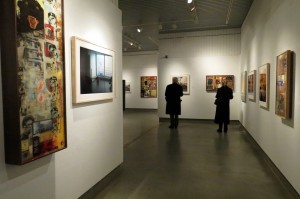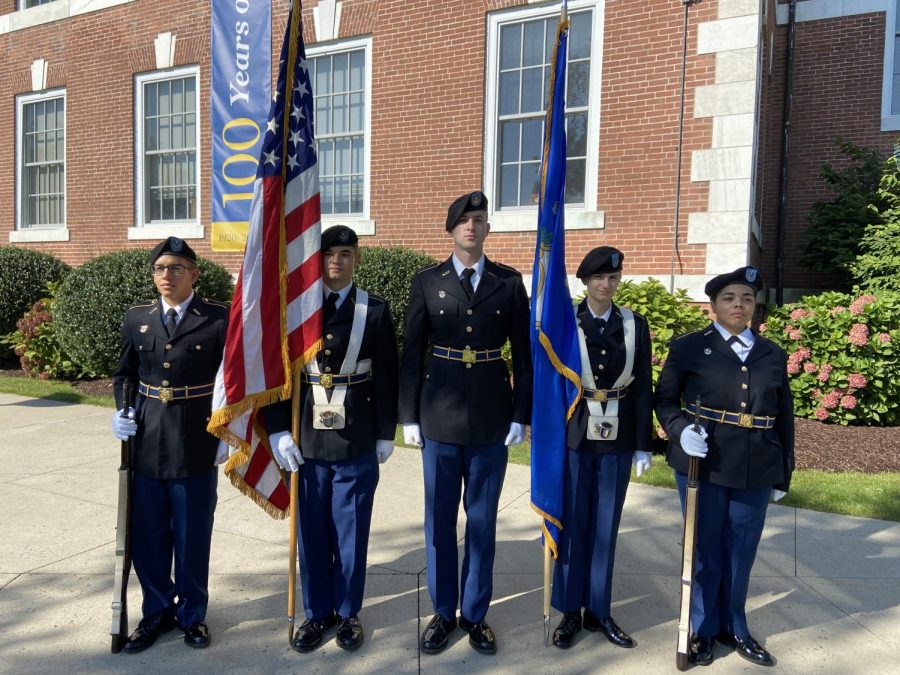Imagination is considered to be the strongest quality needed to create a successful work of art, a piece distinguishable from others. Memory seems just as essential because everyone’s perspective and lived moments are completely different, even if people may be in the same situation.

From memories one can cultivate a certain emotion, and apply that to their art. “Memory, much like a dream, is never sharply in focus or detail, but always suggestive,” artist William McCarthy said.
This month at the Seton Art Gallery in Dodds Hall, curator Laura Marsh put together a display titled “Multi-focus Memoryscapes.” These works of art are an evocation of what is felt and conjured from memory, not a real-world representation. Thursday, March 7, marked the gallery’s official opening, and all three featured artists were present to mingle with viewers and discus their approach to creating a work of art.
Viwers can feel the wistful longing of a once-visited landscape, of a once-felt emotion. Nostalgia pervades from the soft paintings of William McCarthy, the collages of Graham Honaker II, and the vivid juxtaposition of Hank Paper’s photographs. Strong color is found in all of the artists’ works, drawing the viewer in and expressing a feeling symbolic of a previous time.
From the harsh thumbnail sketches William McCarthy begins with, to his final large –scale paintings, everything is conjured from memory. McCarthy has been painting landscapes for about 20 years, and they have become his key style. Oil paint is his preferred medium as he “works from both memory and imagination.”
Graham Honoker said it took him a while to really get started in his professional course as an artist; he never thought it could be a sustainable career. Two years into college he decided. “Even if I have to be poor all my life this is what I want to do,” Honoker said.
Originally studying biology, Graham wanted to be a forest ranger because of the guaranteed pay. “Kind of a slacker move on my part,” Graham admitted. He then spent about three years finding his own style of art, certain that it is what he really wanted to do.
Graham remarked on how he could have been secure with federal pay, but with art “you have to keep grinding away.” His art had always been representational; “I wanted to portray people but didn’t have the ability to paint realistically,” he said.
In terms of the mediums he uses, Graham likes to incorporate things others take for granted; “the fifties/sixties, there is something special about it,” he stated. Graham has been working like this since 2008, always turning his radar on for different materials, consignment shops and thrift shops. One of his favorite locations is in an old library in New London, Conn., where there are three different levels. “Like EBay in real life,” he described. Faces are also a theme that goes through all his work. “[It’s] something I immediately relate to, draws someone in.”
As a street photographer, Hank Paper is constantly seeking to capture an opportune moment. He has done work in Cuba, Israel, Britain and much in Europe. The Yorkney islands north of Ireland have been his favorite place to photograph.
“I do landscapes, but they’re more social,” he said. “People’s stories interest me.”
Paper’s final prints are always slightly saturated in color; that is an essential part of his style. “I’m always developing my technique; no artist ever gets to a terminating point.”
His pieces are chromogenic prints, which are created by a large printer with its own color set. Paper also said that he is a writer, but that it can take “quite a while to write a novel,” so his main focus is photography.
The“Multi-focus Memoryscapes” display will be up in Dodds until March 28, so stop by and see, as Hank Paper puts it, a “palate of projections that will hopefully move the viewer to a place deeper within him-or-herself.”










